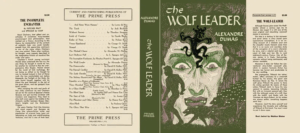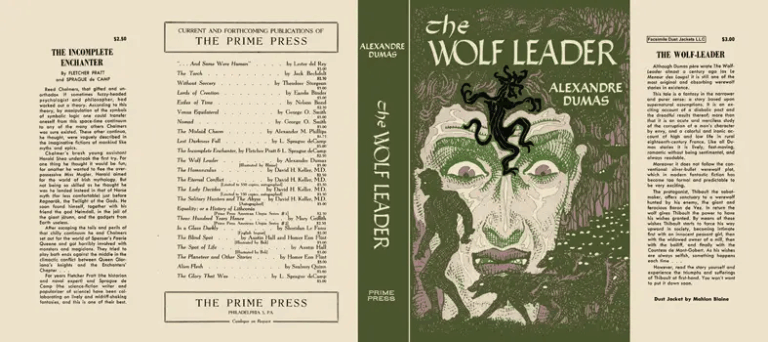Si fanno ancora attendere le annunciate due righe più dettagliate sulla mostra di Tamara de Lempicka a Palazzo Reale (Milano), visitata ieri mattina. Intanto, mi appunto le opere presenti…
 Dipinti in mostra
Dipinti in mostra
- Chinois (1921), opera immatura ma in cui già si notano preludi della scomposizione geometrica della figura;
- La diseuse de bonne adventure (1921-22);
- Portrait d’une fillette avec son ourson (1922);
- Le baiser (1922);
- Rue dans la nuit (1922-23);
- Nu assis de profil (1923);
- La bohémienne (1923);
- Femme à la robe noir (1923), interpretato come il ritratto della sorella di Tamara, l’architetto considerata l’intellettuale di famiglia;
- Portrait de Bibi Zögbe (1923);
- Danseuse russe (1924-25), recentemente scoperto e chiaramente incompiuto;
- Portrait de Kizette (1924), raffigurante la figlia di Tamara, una bambina con evidenti problemi alle gambe;
- L’oiseau rouge (1924), una natura morta non eccezionale con un giocattolo tradizionale russo;
- Portrait de Madame Zanetos (1924), rifiutato dalla committente e non del tutto a torto;
- Le double "47" (1924);
- Le voile vert (1925), cromaticamente davvero intenso;
- Irène et sa soeur (1925);
- Deux nus en perspective (1925);
- Portrait de la duchesse de la Salle (1925), che raffigura la nobildonna in abiti da cavallerizza su un tappeto rosso e con sullo sfondo un drappo grigio, una colonna scura e una città cubista;
- Portrait du prince Eristoff (1925);
- Portrait du marquis D’Afflitto (1925), moderatamente deforme;
- Portrait de Guido Sommi (1925);
- Les deux fillettes aux rubans (1925);
- Kizette en rose (1926), in cui la figlia è cresciuta e i problemi alle gambe sono scomparsi;
- Lassitude (1927), davvero particolare, in cui la stanchezza del titolo è resa da un’esagerazione della massa delle braccia, abbandonate in grembo;
- La tunique rose (1927);
- La belle Rafaëla en vert (1927), il più celebre dei dipinti che ritraggono la prostituta che fu amante di Tamara;
- Rafaëla sur fond vert (1927), altrimenti detto Il sogno;
- Les deux amies (1928);
- Maternité (1928), che emana un senso di straordinaria tristezza secondo alcuni e solitudine secondo altri;
- Portrait du baron Kuffner (1928), che ritrae il futuro secondo marito della Lempicka;
- New York (1929);
- Portrait de Madame G (1930), decisamente sottotono rispetto alle altre opere del periodo;
- Nu aux buildings (1930), tra i primi composti in uno stile veramente maturo, con seni e capelli rigidamente geometrizzati, stoffe drappeggiate e rigide, mani flessuose con le vene in evidenza;
- Le telephone II (1930);
- L’echarpe bleue (1930);
- Jeune fille en vert o Jeune fille aux gants (1930), tra i più celebri quadri di Tamara, nonché prima opera ad essere acquistata dallo stato francese;
 Portrait de Ira (1930), altro dipinto molto celebre e locandina della mostra;
Portrait de Ira (1930), altro dipinto molto celebre e locandina della mostra;- Arlette Boucard aux arums (1931), natura morta con fiori bianchi ed una fotografia, in bianco e nero, di Arlette;
- Portrait de Marjorie Ferry (1932);
- Portrait de Suzy Solidor (1932), ritratto della padrona di un locale per sole donne, amante di Tamara;
- Portrait de Madame M (1932);
- Portrait du comte Vettor Marcello (1933);
- Portrait de Mademoiselle Poum Rachou (1934), con orsacchiotto cubista;
- La Viege bleue (1934);
- La mère supérieure (1935), dimostrazione che quando gli artisti si convertono diventano noiosi;
- Portrait de Louisianne Kuffner (1939);
- Le fuite (1940), melodrammatico;
- Cruche sur une chaise I (1941), tra le prime nature morte statunitensi, scialbe e prive della carismatica sensualità dei ritratti parigini;
- Le moulin à café (1941), natura morta con macinino da caffé, brocca e drappo bianco;
- Atelier à la campagne (1941);
- A l’Opéra (1941), il dipinto più bello della stagione americana, forse l’unico;
- Le turban orange II (1945);
- Jeune fille aux pensées (1945), ritratto di giovane donna con turbante che molto deve a Vermeer;
- Nature morte aux pommes et citrons (1946);
- La clé (1946), forse l’unica natura morta di un qualche interesse, con quella mano-guanto-scheletro;
- Portrait de jeune fille o La Mexicaine (1947);
- Coupe de fruits (1949);
- Chambre d’hotel (1951);
- Femme au chapeau (1952), che sarebbe davvero bello se non fosse per lo sfondo rosa;
- Portrait de Kizette adulte (1945).
 Disegni in mostra
Disegni in mostra
- Portrait de Bianca Belinsioni (1925), ritratto di Bianca Bellincioni a matita su un foglio;
- Portrait d’une jeune femme au chapeau cloche (1926);
- Jeune fille regardant un album (1926);
- Jeune femme debout (1926);
- Croquis Nu assis (1928);
- Croquis Nu assis (1928);
- Croquis Nu assis (1928);
- Homme Nu assis (1929);
- Homme Nu assis (1929);
- Etude pur "La ronde" (1933);
- Autoportrait (1939) notevolmente imbellito.
Alcune fotografie in mostra
- Studio Lorelle, Tamara seduta (1928);
- Bonney, Tamara davanti al ritratto di Tadeusz (1928);
- D’Ora, Tamara in abito da sera (1929), la più bella foto di tutte;
- D’Ora, Tamara in volpe e cappello (1929);
- Studio Piaz, Tamara nella sua camera di rue Méchain (1930);
- Camuzzi, Tamara su sfondo nero (1934);
- Camuzzi, Tamara con i guanti (1934), stupenda;
- Joffé, Tamara con pelliccia, gioielli e sigaretta (1938), charmant;
- Maywald, Tamara seduta (1949).
Filmati
- Un bel atelier modern (1932);
- montaggi di materiale storico;
- Oktjabr’ di Ejzenstejn (1927).





4 Comments
heraclitus
Posted at 11:09h, 28 Januaryadoro tamara de lempicka, peccato sia a milano la mostra.
mi sono dovuto “accontentare” di matisse e bonnard – scherzo, adoro matisse ;-)
e aspetto con impazienza da quasi un anno la mostra dei simbolisti prevista per quest’anno.
Shelidon
Posted at 12:34h, 28 JanuaryAdoro il simbolismo: sei di Roma?
heraclitus
Posted at 14:05h, 28 Januaryebbene sì. ho saputo della mostra che faranno al complesso del vittoriano quest’anno per radio l’anno scorso, e da allora non vedo l’ora, voglio vedere i preraffaelliti e moreau e…
Shelidon
Posted at 14:40h, 28 JanuaryIo penso che scenderò apposta.